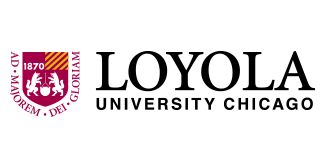Major
Chemistry
Anticipated Graduation Year
2024
Access Type
Open Access
Abstract
CG4511 encodes the protein Phosphoducin-like Protein 3 (DmPhLP3), which is believed to function as a co-chaperone in the folding of cytoskeleton proteins. DmPHLP3 was recently recognized as a regulator of Spermatogenesis. Males homozygous for a P-element insertion in the 5’- UTR of CG5411 display reduced expression of DmPHLP3, failure for sperm to progress past the canoe stage during maturation, and sterility. Spermatid nuclei are found to be scattered rather than clustered and properly aligned, indicating that the nuclei are unable to undergo proper elongation. Additionally, DmPhLP3-/- testes reveal that microtubule rich dense complexes (DCs), a scaffold for nuclear shaping, are reduced in size, indicating that the DC is essential to proper nuclear elongation. The excision of the P-element was found to rescue the proper progression of spermiogenesis and hence fertility. Given the hypothesized role the DmPHLP3 plays in the regulation of the organization of microtubules in the DC and nuclear shaping process. We are currently using Transmission Electron Microscopy to further explore the dynamics of the microtubules in the DC during Spermiogenesis. Additionally, using a UAS-Gal4 CRISPR construct to mutate the N-terminus of Cg4511 to further explore the function and implications the gene has with regard to spermiogenesis.
Faculty Mentors & Instructors
Jennifer Mierisch, Assistant Professor, Biology Department
Creative Commons License

This work is licensed under a Creative Commons Attribution-Noncommercial-No Derivative Works 3.0 License.
Drosophila Phosducin-like Protein 3 Regulates Spermatogenesis
CG4511 encodes the protein Phosphoducin-like Protein 3 (DmPhLP3), which is believed to function as a co-chaperone in the folding of cytoskeleton proteins. DmPHLP3 was recently recognized as a regulator of Spermatogenesis. Males homozygous for a P-element insertion in the 5’- UTR of CG5411 display reduced expression of DmPHLP3, failure for sperm to progress past the canoe stage during maturation, and sterility. Spermatid nuclei are found to be scattered rather than clustered and properly aligned, indicating that the nuclei are unable to undergo proper elongation. Additionally, DmPhLP3-/- testes reveal that microtubule rich dense complexes (DCs), a scaffold for nuclear shaping, are reduced in size, indicating that the DC is essential to proper nuclear elongation. The excision of the P-element was found to rescue the proper progression of spermiogenesis and hence fertility. Given the hypothesized role the DmPHLP3 plays in the regulation of the organization of microtubules in the DC and nuclear shaping process. We are currently using Transmission Electron Microscopy to further explore the dynamics of the microtubules in the DC during Spermiogenesis. Additionally, using a UAS-Gal4 CRISPR construct to mutate the N-terminus of Cg4511 to further explore the function and implications the gene has with regard to spermiogenesis.


